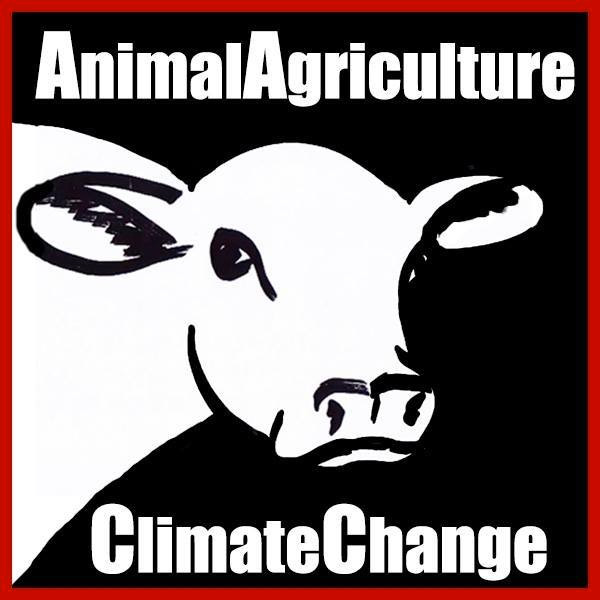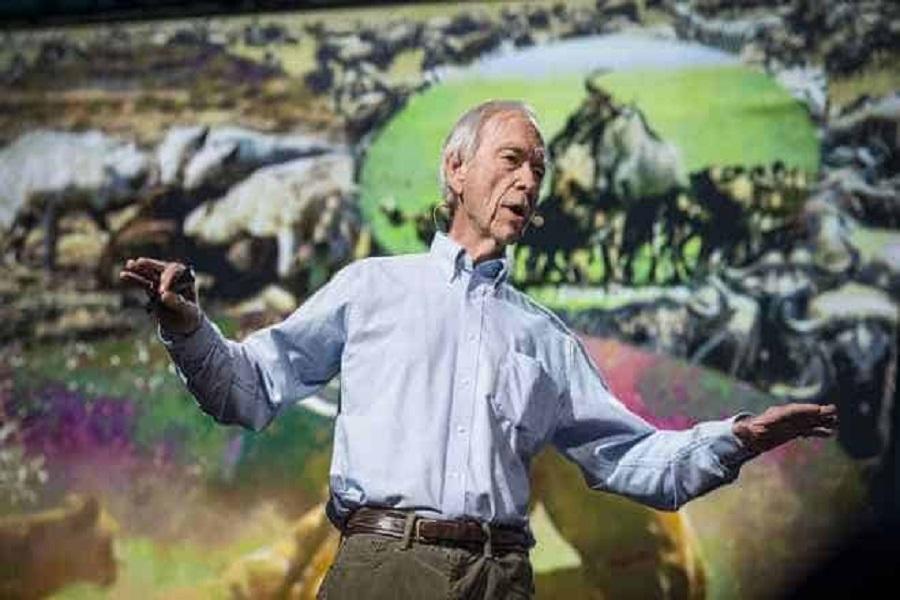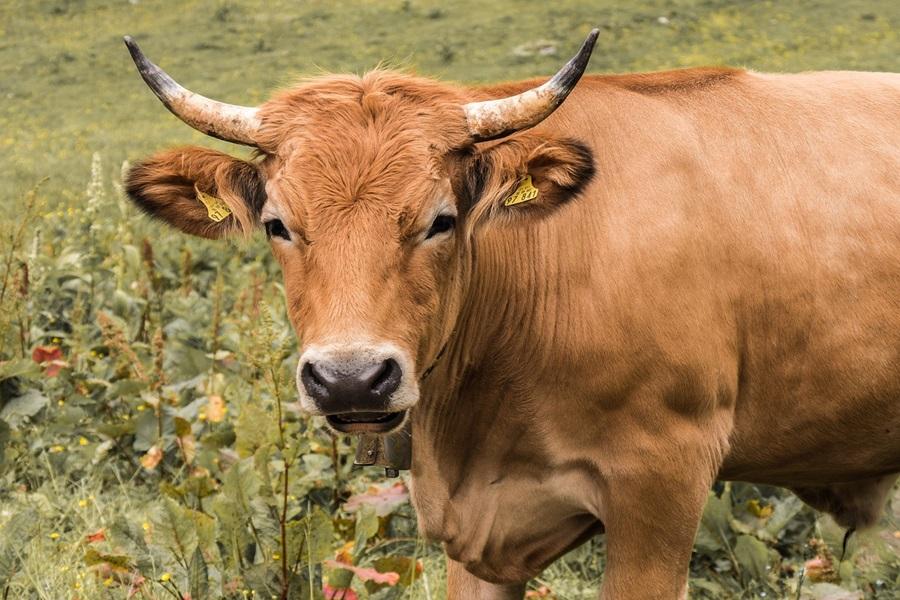Allan Savory tells us that increasing livestock can reduce desertification and reverse climate change, but where is the scientific evidence says George Monbiot.
It doesn’t matter how often miracles are disproved; our willingness to believe in them remains undiminished. Miracle cures, miracle crops, miracle fuels, miracle financial instruments, miracle profits: the continued enthusiasm for these claims reflects the triumph of hope over experience.
Here’s another one: a miracle technique that allows us to reconcile our insatiable demand for meat with the need to protect the living planet. Better still, it proposes, eating meat could actually save the biosphere. A TED talk which makes this claim has been viewed 2.6m times.
Over the weekend in London, the author of this talk, Allan Savory, convened an international conference, in which a long list of speakers lined up to insist that his methods have been vindicated.
I was intrigued by his TED talk, in which he screened astonishing before-and-after pictures purporting to show the transformative impacts of his technique. Savory maintained that without grazing by livestock, grasslands turn to desert. He claimed that he had reversed desertification by raising the number of cattle and goats by 400%, grazing them intensively for short bursts in small paddocks and then moving them on.
By this means, he said, the hooves of the animals break up what he calls the “cancer of desertification”: the crust of algae that forms on bare soil in dry areas. Breaking it up, he claimed, encourages the growth of grass. By trampling vegetation and coating it with manure, the livestock produce a mulch that ensures the soil absorbs and retains more water.
As a result of this transformation, we can do something astonishing: We can take enough carbon out of the atmosphere and safely store it in the grassland soils for thousands of years, and if we just do that on about half the world’s grasslands that I’ve shown you, we can take us back to pre-industrial levels while feeding people. I can think of almost nothing that offers more hope for our planet, for your children, for their children and all of humanity.
Savory’s grazing technique, which he calls “holistic management”, could, in other words, reverse not only desertification but also climate change – while permitting us to keep consuming vast quantities of meat. No wonder it has been received with such enthusiasm.
I would love to believe him. But I’ve been in this game too long to take anything on trust – especially simple solutions to complex problems. So I went to the library and started reading. A large number of academic papers have been published in response to his claims, testing them by means of experimental and comparative studies. The conclusion, overwhelmingly, is that his statements are not supported by empirical evidence and experimental work, and that in crucial respects his techniques do more harm than good.
A new review of experimental results, in the journal Agricultural Systems, has this to say about Savory’s claims that his intensive rotational grazing (IRG) can regenerate grassland:
The vast majority of experimental evidence does not support claims of enhanced ecological benefits in IRG compared to other grazing strategies, including the capacity to increase storage of soil organic carbon … IRG has been rigorously evaluated, primarily in the US, by numerous investigators at multiple locations and in a wide range of precipitation zones over a period of several decades. Collectively, these experimental results clearly indicate that IRG does not increase plant or animal production, or improve plant community composition, or benefit soil surface hydrology compared to other grazing strategies
Another review article, in the International Journal of Biodiversity, found that grazing by livestock in arid places is more likely to destroy grass and other vegetation than to protect it:
Published comparisons of grazed and ungrazed lands in the western US have found that rested sites have larger and more dense grasses, fewer weedy forbs and shrubs, higher biodiversity, higher productivity, less bare ground, and better water infiltration than nearby grazed sites.
Among these sites was a ranch in Arizona whose vegetation, Savory had claimed, had become “moribund” and increasingly sparse since grazing there had ceased. In reality, there has been a massive increase in both plant cover and plant diversity on this site since the livestock were removed.
As for the claim that the algal crust is the “cancer of desertification”, it appears to be just the opposite: a rich, diverse and ancient ecosystem in its own right, that stabilises the soil, increases organic matter and absorbs water. These crusts are “fragile, highly susceptible to trampling, and are slow to recover from trampling impacts. Loss of these crusts results in increased erosion and reduced soil fertility”.
Overall, it concluded: “Ecologically, the application of holistic management principles of trampling and intensive foraging are as detrimental to plants, soils, water storage, and plant productivity as are conventional grazing systems.”
So what exactly do Savory’s dramatic pictures of transformation show? As they are uncaptioned and not linked in his presentations to scientific studies, it’s hard to tell. Many factors affect the way vegetation changes in arid places. Do these shifts really depict the results of the application of his techniques, or something else entirely?
As for the claim that holistic management can reverse the build-up of carbon dioxide in the atmosphere, according to RealClimate.org, he’s wrong by orders of magnitude. Just to balance current carbon emissions, the uptake of carbon by all the world’s vegetation (not only grasslands) would have to triple. But Savory says he can go beyond that, and his technique can bring atmospheric carbon “back to pre-industrial levels”. As RealClimate puts it: “science tells us that this claim is simply not reasonable.”
Far from grazing helping to store carbon, holistic management seems to have the opposite effect: the evidence strongly suggests that livestock reduce carbon storage rather than raising it. In terms of total greenhouse gas emissions, the intensive grazing of cattle on grasslands can be even worse than producing them in feedlots.
While Savory was in London, I managed to secure a telephone interview with him, to ask him about these challenges. It did not go well. He began by comparing himself to Galileo, which is never a good sign, and it went downhill from there. I have learnt to be suspicious of people who give long, distracting, irrelevant answers to simple questions. Apart from Ian Plimer, I have never come across anyone who does it to greater effect.
I asked him about that ranch in Arizona, and the claim that he was diametrically wrong about what had happened to the vegetation once grazing had ceased. He launched into a long disquisition about a court case in Namibia. After several attempts I at last managed to break in, to remind him I’d asked about a ranch in Arizona. It was as if he registered the name of the state and nothing else: he started talking about the quality of the state’s scientists, its rifle ranges and its tortoises.
I asked him about his carbon claims. He told me it wasn’t him who had made such claims, but other people who knew far more about it than he did. Could he gave me the names of those people?
He gave me a long, rambling answer about the different impacts of land management around the world, climate change, fire, poverty, violence, red meat and veganism. I tried and tried again. At last I managed to bring him round to the question, and extracted some names from him. So where had they published their calculations? They hadn’t.
His staff later sent me an article on the issue published on the Savory Institute’s website, but – as far as I can tell – nowhere else. There are no named authors. If you intend to make a massive and extraordinary scientific claim, and build your position around it, you had better ensure that it has been properly tested, which is why the peer review process exists.
Broadly, however, his theme was that what scientists were studying was not the entirety of holistic management, but only one aspect of it: It’s like having a plane that flies that lands on three wheels, and we’ve only had wheelbarrows or tricycles for centuries and so people are studying the tricycle and saying well it’s got three wheels, and we cannot make it fly; it can’t fly. How come the plane can fly when it’s also got three wheels?
Savory referred me to a paper he’d written, which he said, explains the science and methodology of holistic grazing. This paper (again apparently unpublished except on his website) explained the lack of scientific support for his claims as follows:
Holistic management does not permit replication. Because of this fact we can only validate the ‘science’ used and monitor or document ‘results achieved’. Note: This point is critical to understanding the great difficulty reductionist scientists are experiencing trying to comprehend holistic planned grazing – because no two plans are ever the same even on the same property two years running, planned grazing cannot be replicated which reductionist scientists do to try to understand the ‘science.’
It then contended that: The only independent assessment of all available critics and their citations was done by Chris Gill. Gill, involved in management and with a liberal arts education, studied every citation he could locate and who in turn those authors cited. As he reports not a single paper discrediting Holistic Management actually studied, or even attempted to study, holistic planned grazing.
Unfortunately Savory gives no reference for this assessment. In the academic literature, I’ve been unable to find a paper on the subject by anyone called Gill. Elsewhere, all I have been able to locate is a three-page magazine article by Gill, reproduced on Savory’s websites. It contains no references, no data and no links to any experimental or empirical research. If this is “the only independent assessment of all available critics and their citations” that Savory will accept as valid, I think it might tell you something about the substance of his claims.
It all reminds me, I’m afraid, of the way in which certain evangelists for alternative medicine operate.
For example:
- Savory maintains that it’s not the claims that are wrong but the scientific process by which they are assessed. (In one interview he says: “you’ll find the scientific method never discovers anything.”)
- He claims that “reductionist science” doesn’t understand what holistic management involves, which is why it fails to measure the outcomes properly. But, as Adam Merberg points out, his account of what holistic management means appears inconsistent and poorly defined, which “allows Savory to blame any failures on a misunderstanding of the method.”
- As scientific studies don’t produce the results he wants, he relies instead on testimonials.
- He diagnoses normal conditions as deadly pathologies (“the cancer of desertification”) then claims to have found a cure for them.
- He makes claims about his techniques which are not only implausible but appear to be scientifically impossible.
It seems to me that there’s a fairly solid rule, that applies to almost any question: what you want to believe is almost always wrong. If something sounds too good to be true, that’s because, in nearly all cases, it is.
Original source: https://www.theguardian.com
https://www.animalagricultureclimatechange.org/where-kiss-the-ground-documentary-falls-short/











